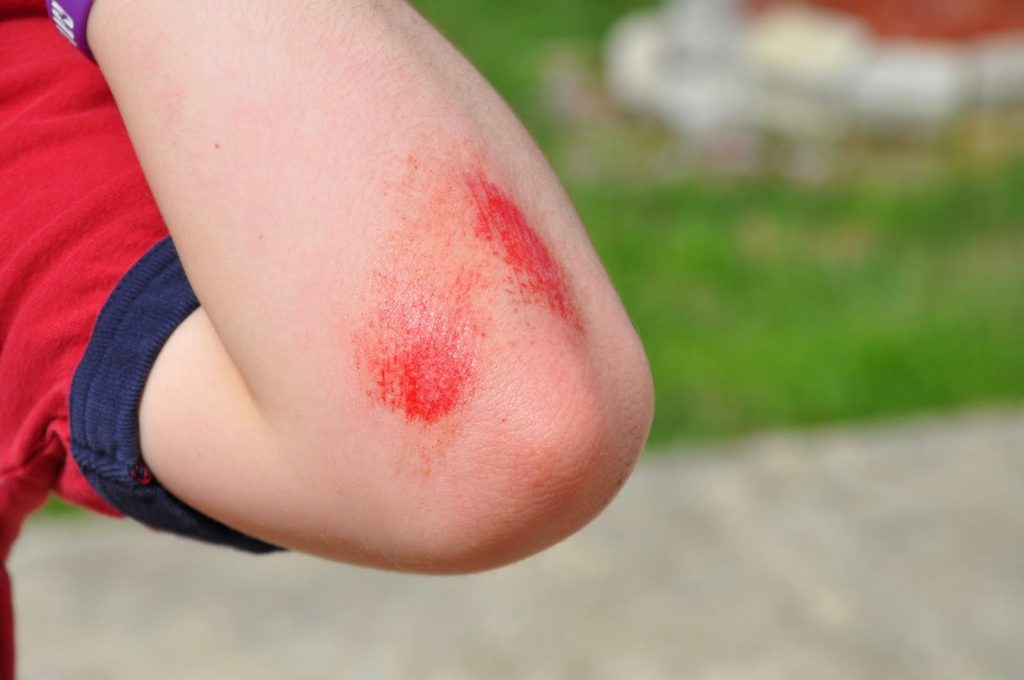Cuts and Scrapes: Wise Advice and Urban Legends

We all know the sound too well – your little one crying in pain after a tumble which resulted in a nasty scrape (also known as an abrasion). What should you do? First, remember to remain calm and reassuring to your child; then get to cleaning and dressing the wound.
The best thing to do is rinse with cool water or saline solution – not hydrogen peroxide. Most parents think hydrogen peroxide would be the best choice, but it actually causes more cellular damage while the body is attempting to heal. In addition, it may burn a bit more than the mild water or saline solution. If needed, use a soft cotton swab to clean any stubborn debris from the wound. If any dirt or asphalt stays in the wound, you run the risk of it permanently staining (or tattooing) the skin.
Once the abrasion is cleaned, you should cover the entire area with antibiotic ointment (such as Neosporin® or Polysporin®). It is important to choose an ointment rather than a cream so that when you apply the ointment, it doesn’t burn the injured skin.
Next, you want to keep the wound covered with either non-adherent gauze pads or a smaller bandage. The biggest urban legend we see is a parent who has heard they need to “let the wound air out” and form a scab. This is quite counterproductive to the healing process. Instead of healing the wound, the body will make a scab which can crack open and become infected. It is always best to cleanse the wound gently and reapply antibiotic ointment once or twice a day and recover with a bandage. This will speed healing and decrease the risk of infection.
Now onto bad cuts (or a laceration): most times these injuries are sustained from broken glass, a knife, or from falling against a hard surface. The first order of business is to assess how deep and significant the wound is and if a head injury was involved. If there is any gapping or inability to stop the bleeding, the laceration usually needs to be closed by your CPCMG pediatrician, either with stitches (sutures) or medical skin bonding glue (DERMABOND®). Also, if a head injury is involved, your child likely needs evaluation.
However, if the cut is not too deep, you can take care of it at home. The best bet is to keep the wound edges as close as possible either with butterfly bandages or with a regular bandage. Again, cleanse the wound as directed above and keep the antibiotic ointment on it as well. This will speed healing and minimize scarring.
After the wound is healed, it’s possible a scar may form. It’s always a great idea to use a scar reduction cream (such as Mederma®) and keep the area protected from the sun for several months – use a good zinc or titanium based sunscreen and this should help. When in doubt, see your CPCMG pediatrician and remember, there is no need to “dry it out.”

